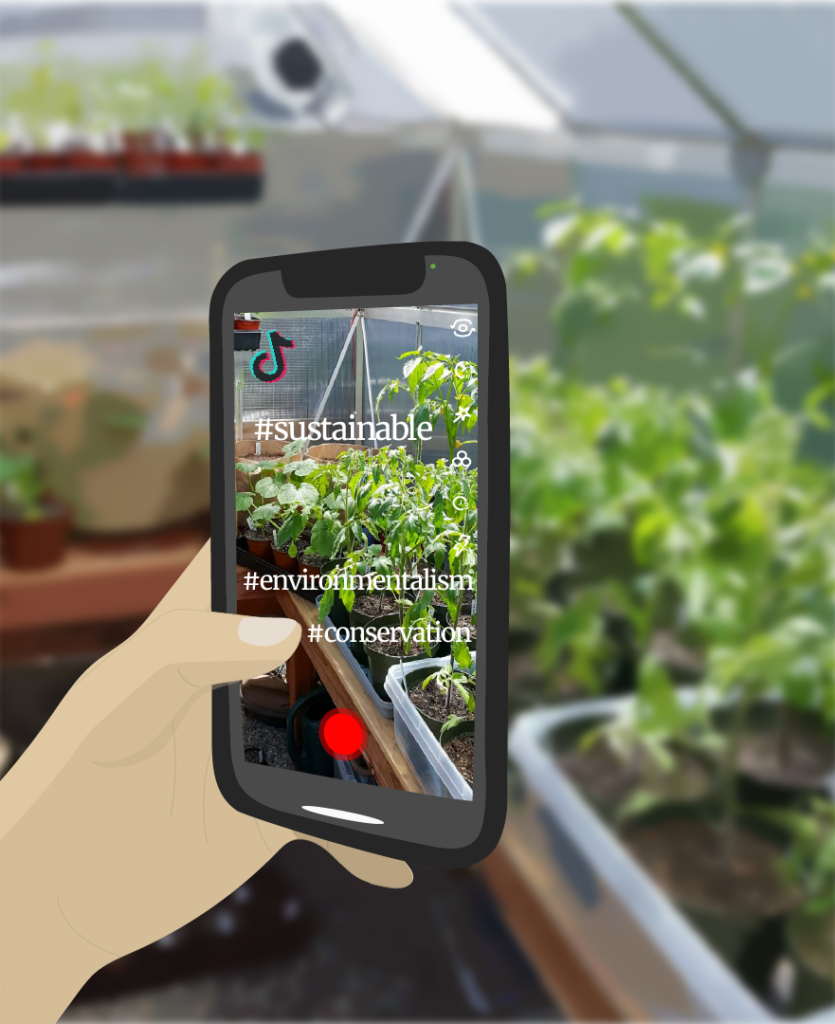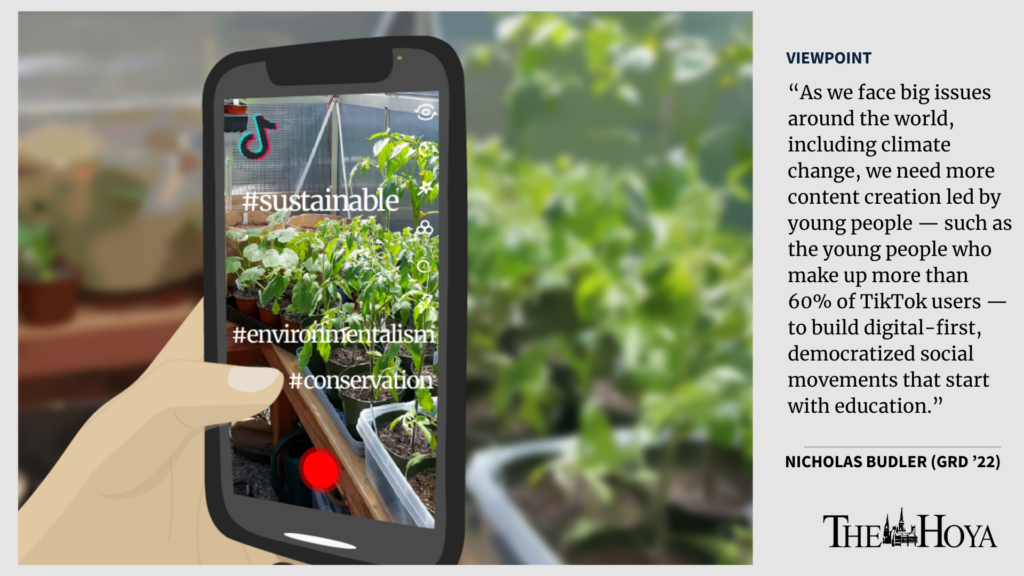As the pandemic dragged on, I tried hard to avoid downloading TikTok. I honestly thought the app was pointless. As I researched how to make wildlife conservation content more accessible and appealing through social media for a recent project, I didn’t consider TikTok a place for democratized social movements or a place to build environmental awareness.
Eventually, I caved and downloaded the app. After lots of scrolling, I found myself in a corner of TikTok I didn’t expect. Instead of seeing an endless feed of pointless, random videos, I found a community of young people creating trending, funny and informative videos about conservation, climate change and environmentalism.
As we face big issues around the world, including climate change, we need more content creation led by young people — such as the young people who make up more than 60% of TikTok users — to build digital-first, democratized social movements that start with education.

TikTok is the perfect place for this youth participation, and it is harnessing a methodology for learning that has worked in the past. In the 1970s, a New York Times article highlighted a new teaching method used in a music class taught by Dr. Robert L. Pace from Teachers College, Columbia University. He devised a “system whereby pupils are taught in groups and also in teams of two, with each member of the team helping the other.”
Pace’s goal was to make students independent learners by providing them with easily digestible content and presentation. He simplified teaching by offering students simple ideas that they could interrelate and reshape after learning the basics. And that process looks a lot like what happens on TikTok.
After a Sunday afternoon of scrolling through dozens of TikTok dances, their soundtracks burned into my brain, I realized that eco-focused young people were spreading education and awareness using a methodology similar to Pace’s.
By using simple stories, catchy content and digestible presentations — backed by an algorithm designed to keep users scrolling by curating their personal feed — young people can use TikTok to educate the masses.
And they have the format down. The repurposing of songs and trends, the option to duet with other creators, the human interest elements and the other tricks for making engaging content blend Pace’s teaching approach and the TikTok equation to produce widely shared content.
As The Guardian recently reported, eco-focused TikTokers rake in thousands of views on videos about biodiversity, sustainable products and ways to make online shopping more environmentally friendly. Young influencers also provide information and raise awareness on everything from environmental podcasts to vegan sneakers to saving money by living in vans.
And organizations have taken notice of the power of TikTok. In 2019, Conservation International launched a successful #SaveOurSeas challenge in partnership with TikTok. Global influencers boosted the trend with their content, and TikTok donated $2 for every video to save the oceans from plastic pollution.
TikTok later launched its #EcoUnited hashtag aimed at lifestyle changes on World Environment Day, a sign that organizations are increasingly aware of young people’s growing interest in making eco-friendly changes: recycling, taking public transportation and going vegan.
People are also taking notice of their own collective power. An environmentally focused EcoTok “house” that hopes to compete with the larger influencer houses like Hype House and ValidCrib has gained over a million likes through their videos.
In addition, now is the time for organizations like Conservation International to give these influencers the digital resources they need to connect with other young people, spread education campaigns, promote better habits and help mobilize people to protest — especially as the COVID-19 pandemic continues and digital-first video content grows in prominence.
For now, although nowhere nearly as famous as household names like Greta Thunberg and David Attenborough, eco-influencers like Phil the Fixer and Taylor Bright will continue to play a growing role in these grassroots, bottom-up movements as they create content for a better world. Influencer culture is here to stay.
And with TikTok reigning supreme in Google’s 2020 Year in Search, now is likely just the beginning of a digital movement in the face of a growing climate crisis. For Georgetown University students who want to harness emerging technology platforms for social movements — no matter the topic — sometimes the best way to understand is to scroll. And scroll. And scroll.
Nicholas Budler is a first-year in the Master in Communication, Culture & Technology program.










kfelton • Mar 30, 2021 at 6:10 pm
It’s so great that young people who care about important topics are finding creative new ways to project their voices. Who knew that TikTok could be a such a force for change?
Ebrandz • Feb 4, 2021 at 10:44 pm
Just when you thought Tiktok can only be use for entertainment lol